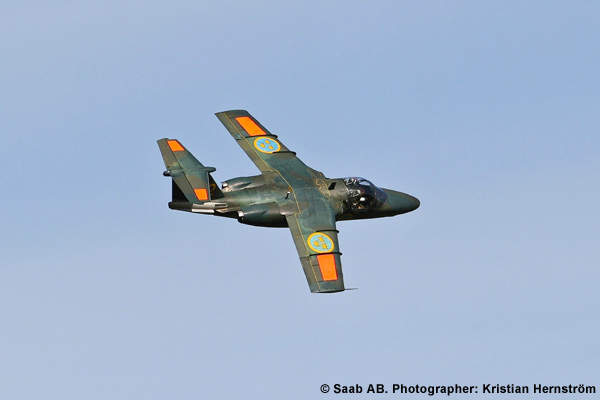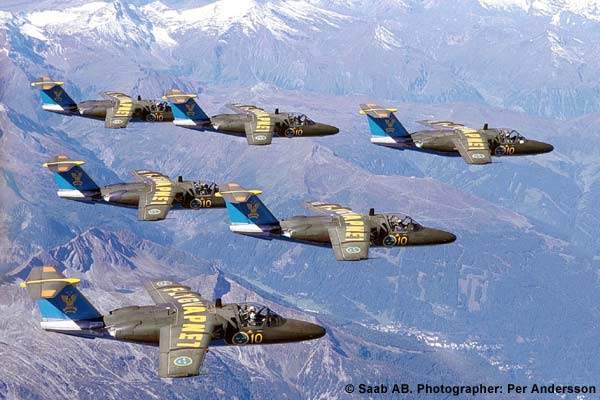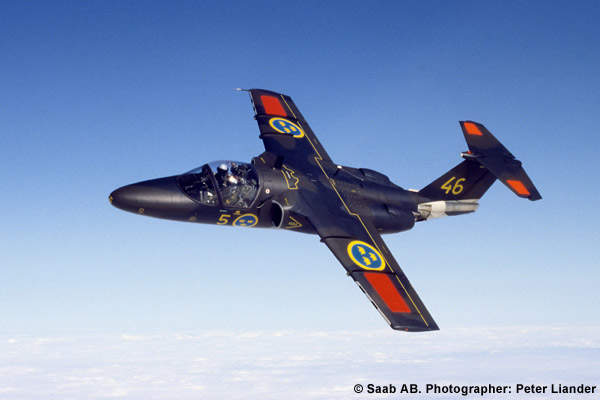The SAAB SK-60, a twin-engine jet trainer, first took to the skies in 1963 and quickly became the backbone of the Swedish Air Force’s pilot training program. Designed by the renowned Swedish aerospace company SAAB, the aircraft was initially intended to serve as both a trainer and a light attack aircraft. Over the decades, it proved itself to be a versatile and reliable workhorse, earning the respect of pilots and military personnel alike.
For nearly six decades, the SK-60 trained thousands of pilots, preparing them to operate Sweden’s advanced fighter jets, including the legendary SAAB JAS 39 Gripen. The aircraft’s simplicity, durability, and adaptability made it a crucial tool in shaping Sweden’s air defense capabilities during the Cold War and beyond.

A Bittersweet Farewell
The decision to retire the SAAB SK-60 was not made lightly. As technology has advanced and the demands on modern air forces have evolved, the need for more sophisticated training aircraft became evident. The Swedish Air Force has now transitioned to using more advanced trainers that better simulate the experience of flying today’s state-of-the-art fighter jets.
The final flight of the SAAB SK-60 was a deeply emotional event, attended by Swedish Air Force veterans, active-duty personnel, and aviation enthusiasts. The aircraft performed a ceremonial flypast over key military installations, including the historic Såtenäs Air Base, where it had been stationed for much of its operational life.
Major General Erik Bergström, Commander of the Swedish Air Force, paid tribute to the aircraft during a special ceremony, stating, “The SAAB SK-60 has been the bedrock of our pilot training for nearly 60 years. It has served Sweden with unwavering reliability, and today we honor its legacy and the generations of pilots who have flown it.”

A Storied Legacy
The SK-60’s retirement marks the end of an era for Swedish aviation, but its legacy will endure. The aircraft was not only a training platform but also a symbol of Sweden’s commitment to self-reliance in defense. Its development and production by SAAB represented the country’s ability to produce world-class military technology, a tradition that continues today with cutting-edge aircraft like the Gripen.
Over the years, the SK-60 was also used in various other roles, including light reconnaissance and liaison missions. Its adaptability and rugged design allowed it to operate in a wide range of conditions, from the icy expanses of northern Sweden to international airshows, where it often stole the spotlight.
Looking Forward
With the retirement of the SAAB SK-60, the Swedish Air Force is looking to the future. The new generation of training aircraft will offer advanced avionics, digital interfaces, and simulation capabilities that better reflect the demands of modern air combat. However, the SK-60’s legacy will continue to influence Swedish pilot training and aviation culture for years to come.
In a final gesture of respect, one of the last operational SK-60s will be preserved and displayed at the Swedish Air Force Museum in Linköping, allowing future generations to appreciate the aircraft that helped shape Sweden’s air defense history.

An Icon Takes Its Final Bow
As the SAAB SK-60 fades into the annals of history, it leaves behind a profound impact on those who flew it and those who maintained it. It was more than just a machine; it was a mentor to countless pilots, a testament to Swedish engineering, and a stalwart defender of the nation’s skies.
The skies over Sweden may never see another SK-60 in active service, but its spirit will live on in the hearts of all who knew it. As it takes its final bow, the SAAB SK-60 joins the ranks of aviation legends, forever remembered as a symbol of Swedish resilience and innovation.





